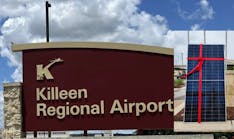$250M DOE program offering loans for Energy Efficiency upgrades at Homes, Businesses
Residents and commercial property owners can apply for loans to fund energy efficiency upgrades to their homes and businesses under a new $250 million federal program.
The U.S. Department of Energy announced Tuesday is accepting applications throughout the nation for funding through the Energy Efficiency Revolving Load Fund Capitalization Grant program. The fund was established by the Biden Administration supported Bipartisan Infrastructure Law and enables states and territories to establish revolving loan funds for energy investment in facilities.
“Energy efficiency is one of the most cost-effective and easiest to deploy solutions we have to combat climate change and reduce energy costs,” said U.S. Secretary of Energy Jennifer Granholm. “By expanding access to energy efficiency upgrades for American families and small to medium-sized businesses, we will generate energy savings and deliver cleaner air, helping states and historically underserved communities experience the broad benefits of energy efficiency.”
The commercial and residential sectors together account for almost 15 percent greenhouse gas emissions in the U.S., according to federal data. Altogether building energy use, including industrial, emits close to 40 percent of carbon emissions globally, reports show.
In addition to providing loans for energy efficiency audits and upgrades, states can use up to one-quarter of the funding for grants and technical assistance to low-income homeowners and small businesses. A recent DOE study indicated that energy efficiency loans for residential customers are relatively safe and have been repaid.
Energy efficiency improvements can include HVAC systems, lighting, windows, insulation and smart meters to better monitor and manage energy consumption.
Forty percent of the funding is allocated to all state energy offices according to the State Energy Program formula, and the other 60% is allocated to a subset of Priority States, which are defined by the Bipartisan Infrastructure Law as:
- Among the 15 states with the highest per-capita combined residential and commercial sector energy consumption, as most recently reported by the Energy Information Administration; OR
- Among the 15 states with highest annual per-capita energy-related carbon emissions by State, as most recently reported by the Energy Information Administration.





